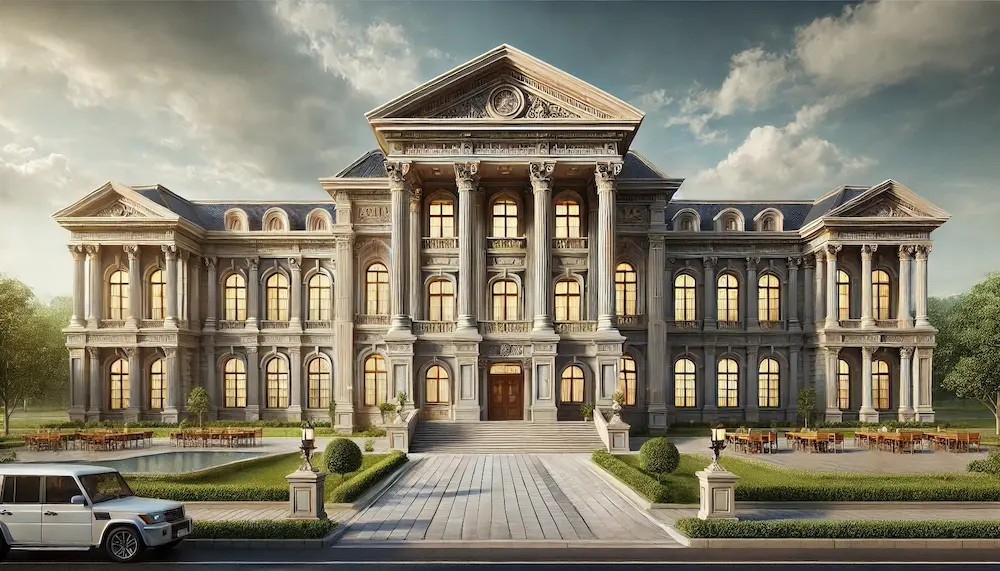Neoclassical architecture, characterized by its grandeur, symmetry, and incorporation of classical Greek and Roman elements, has been a prominent style in the design of educational institutions, including elementary schools.
Introduction to Neoclassical Elementary School Architecture
Neoclassical architecture emerged in the mid-18th century as a reaction to the ornate Baroque and Rococo styles, drawing inspiration from the simplicity and elegance of ancient Greek and Roman structures. In the context of elementary schools, this architectural style aimed to convey the values of order, discipline, and enduring knowledge, creating an environment that reflected the educational ideals of the time.
History and Origins of Neoclassical Elementary School Architecture
The adoption of neoclassical architecture for educational buildings gained momentum in the late 19th and early 20th centuries, particularly in the United States and Europe. This period saw a surge in the construction of public schools designed in the neoclassical style, influenced by a renewed interest in classical antiquity and a desire to embody democratic ideals through architecture. For instance, the 1893 World’s Columbian Exposition in Chicago revived a national interest in neoclassical design, inspiring the construction of schools that featured monumental scales and classical elements.
Key Features of Neoclassical Elementary School Architecture
- Symmetry and Proportion: Neoclassical school buildings often exhibit balanced and harmonious proportions, with symmetrical facades that convey a sense of order and stability.
- Classical Columns and Pilasters: Incorporation of Doric, Ionic, or Corinthian columns and pilasters is common, supporting pediments or entablatures and adding to the grandeur of the structure.
- Pediments and Entablatures: Triangular pediments and detailed entablatures adorn entrances or central sections, drawing direct inspiration from classical temples.
- Use of Stone and Brick: Construction materials such as stone and brick are prevalent, providing durability and a timeless aesthetic.
- Elevated Entrances: Stately staircases leading to raised entrances are typical, enhancing the imposing presence of the building.
Applications of Neoclassical Design in Elementary Schools
Several notable examples of neoclassical elementary schools include:
- Monroe School in Phoenix, Arizona: Built in 1914, this three-story brick building was designed by architect Norman Foote Marsh in the neoclassical style. At its opening, it was the largest elementary school west of the Mississippi River.
- Lincoln School in Hornell, New York: Constructed in 1923–1924, this three-story dark brick building features neoclassical revival architecture with a flat roof and terra cotta trim. It served as a neighborhood elementary school until 1979.
- Mantua Center School in Mantua, Ohio: Completed in 1914, this stone-built neoclassical building served as a centralized rural school, reflecting the early 20th-century trend towards consolidating educational facilities.
Considerations When Choosing Neoclassical Design for Elementary Schools
- Cultural Significance: Neoclassical architecture carries historical and cultural connotations that may resonate with the community’s values and heritage.
- Cost and Materials: The use of high-quality materials and intricate detailing can increase construction costs, necessitating careful budget planning.
- Functional Adaptability: While aesthetically impressive, neoclassical designs must be adapted to meet modern educational requirements, ensuring that interior spaces are conducive to contemporary teaching methods.
- Maintenance: The preservation of neoclassical elements requires ongoing maintenance to retain their structural integrity and visual appeal.
Conclusion
Neoclassical architecture has played a significant role in shaping the design of elementary schools, imparting a sense of grandeur, order, and timelessness. While modern educational facilities may favor more contemporary styles, the enduring presence of neoclassical school buildings serves as a testament to the lasting impact of classical architectural principles in the realm of education.
